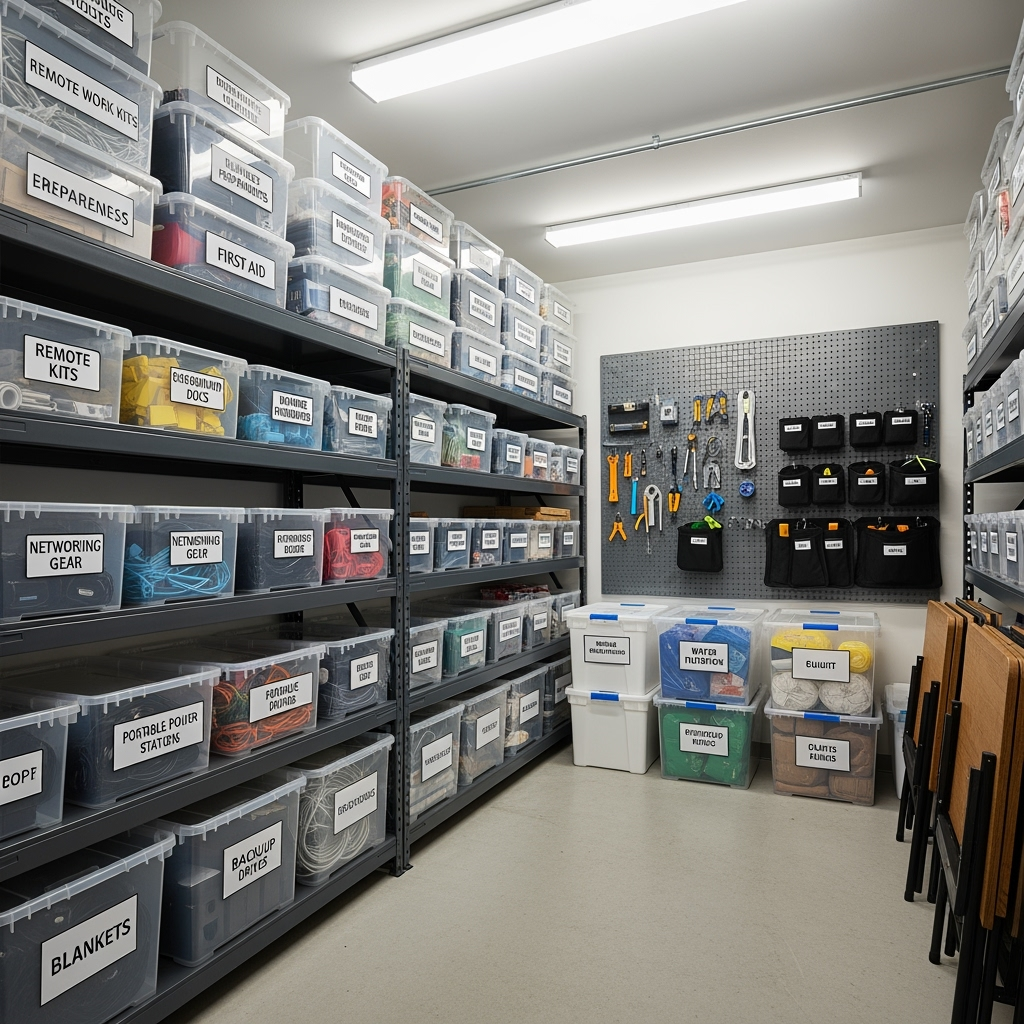Why Remote Workers Need Emergency Storage Solutions
In today’s digital workplace, remote work has become the norm for millions of professionals. However, with this shift comes the critical need for emergency preparedness to ensure business continuity during unexpected situations. Whether it’s power outages, natural disasters, or other disruptions, having a well-organized storage solution can make the difference between maintaining productivity and facing costly downtime.

Essential Components of Remote Work Emergency Storage
Creating a comprehensive emergency storage solution requires careful planning and organization. Here are the key elements to consider:
1. Equipment Protection
– Backup laptops and devices stored in waterproof containers
– Surge protectors and power strips
– External hard drives and backup devices
– Spare cables and connectors
2. Power Solutions
– Portable generators
– Power banks and battery backups
– Solar chargers
– UPS (Uninterruptible Power Supply) systems
3. Critical Documentation
– Digital and physical copies of important business documents
– License and certification information
– Insurance policies
– Client contracts and contact information

Climate-Controlled Storage: A Must for Business Continuity
When it comes to protecting sensitive equipment and documents, climate-controlled storage is essential. Here’s why:
Temperature Regulation
Consistent temperature control prevents damage to electronic equipment and extends the life of your backup devices.
Humidity Control
Proper humidity levels protect against moisture damage to both electronic equipment and paper documents.
Protection from Environmental Factors
Climate-controlled units shield your emergency supplies from dust, pests, and extreme weather conditions.
Organizing Your Emergency Storage Space
Zone System
Create designated zones for different categories of emergency supplies:
- Tech Zone: Electronic equipment and accessories
- Power Zone: Generators and backup power supplies
- Document Zone: Important paperwork and records
- Communication Zone: Backup phones and communication devices
Inventory Management
Maintain a detailed inventory system that includes:
- Regular updates of stored items
- Expiration dates for batteries and other perishables
- Equipment maintenance schedules
- Quick-access lists for emergency situations
Accessing Your Emergency Storage
Location Considerations
Choose a storage facility that offers:
- 24/7 accessibility
- Convenient location near your home office
- Enhanced security features
- Easy loading and unloading options
Regular Maintenance and Updates
To ensure your emergency storage remains effective:
- Conduct quarterly reviews of stored items
- Test all electronic equipment regularly
- Update emergency contact lists
- Replace expired items promptly
- Adjust storage organization based on changing needs
Making the Most of Your Storage Investment
Consider these additional tips to maximize your emergency storage solution:
Storage Unit Selection
- Choose an appropriately sized unit for your needs
- Ensure adequate space for future expansion
- Consider multiple smaller units for redundancy
Security Measures
- Use high-quality locks and security devices
- Document serial numbers of stored equipment
- Consider insurance coverage for stored items
Conclusion
In today’s remote work environment, having a well-planned emergency storage solution isn’t just about being prepared—it’s about ensuring business continuity and professional success. By implementing these storage strategies and maintaining organized, climate-controlled storage spaces, you can protect your remote work capabilities and maintain productivity even during unexpected challenges.










Leave a Reply